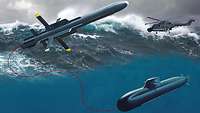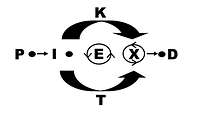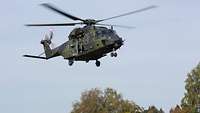Sea-to-Air Guided Missile System for U212A (IDAS)
How do submarines defend themselves against air threats? With IDAS they are able to fire guided missiles.
Guided Missile System for Submarines
The IDAS (Interactive Defense and Attack System for Submarines) guided missile system provides submarines with a self-defense capability against airborne threats. These threats may, for example, originate from helicopters which are equipped with lightweight torpedoes for antisubmarine warfare (ASWAnti-Submarine Warfare).
In such a threat situation, submerged submarines have so far not been able to actively defend themselves. The only option available is to hide under water in the hope of avoiding detection.
This purely national project now aims at integrating a guided missile system which can be launched from the submarine and allows the crew of a submerged submarine to defend themselves against ASWAnti-Submarine Warfare helicopters.
Submerged Launch Capability and Flight Control
The core capabilities of this innovative system include the ability to launch a missile from a submerged submarine and the missile’s ability to be interactively controlled and guided by the operator during its entire flight. To that end, the data connection between guided missile and submarine is also maintained during the flight via an optical fiber.
Mode of Operation
The attacking helicopter is identified by the sonar system of the submarine. Afterwards, the target data are displayed on the operator’s tactical console.
In a next step, the guided missile is hydraulically ejected from the torpedo tube. Once its motor#een has ignited at a safe distance from the submarine, the missile starts moving in the direction of the target under water. At this point, it is already possible to change direction in order to engage the target from the side or from behind. Thanks to a booster, the guided missile breaks the water surface and rises to cruising altitude. The guided missile’s wings are unfolded for flight control.
During the homing phase, the guided missile flies towards the previously selected probable target area at maximum speed. Throughout the entire mission, the system communicates graphical views of the environment perceived by the guided missile’s seeker and information on the targets to the operator in the submerged submarine via optical fiber. This enables the operator to intervene at all times, if need be, and to change or correct the operational target designation or to abort the mission at any point in time.
At the end of the mission, the target is engaged by initiating the warhead and its fragmentation effect.
Technical Data
| Dimension | Actual value |
|---|---|
| Length | 2,800 mm |
| Diameter | 180 mm |
| Weight | 140 kg |
| Speed | 240 m/s |






